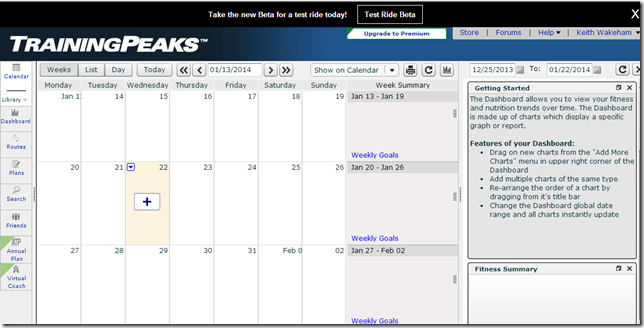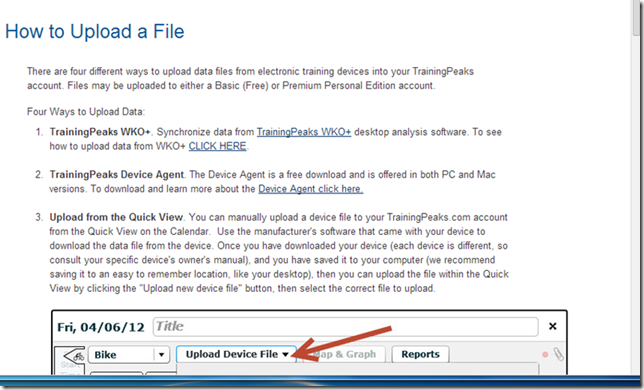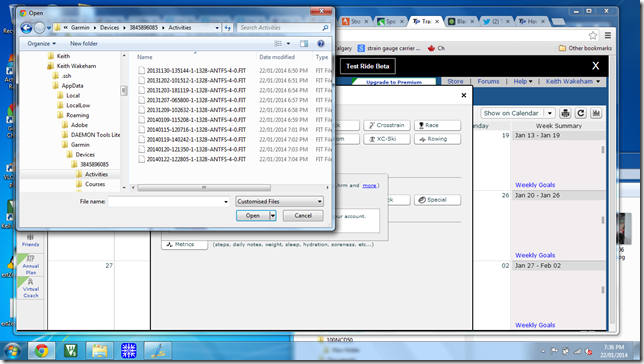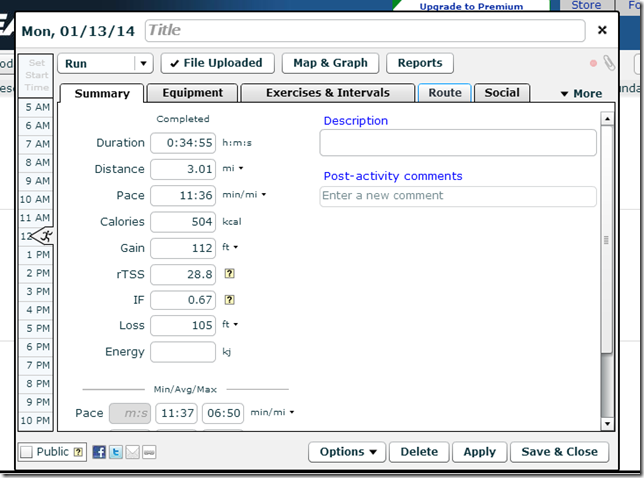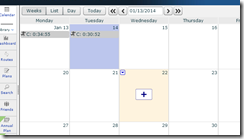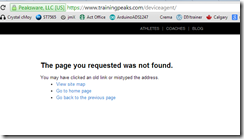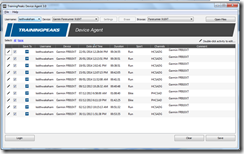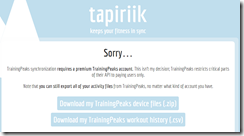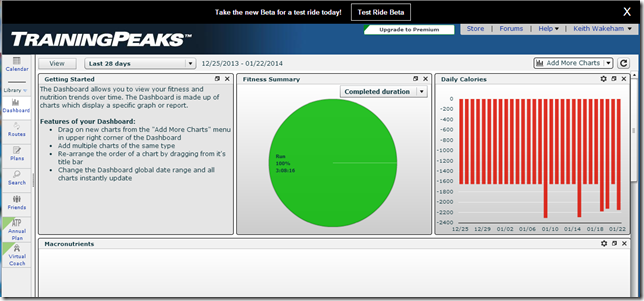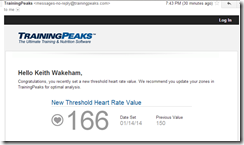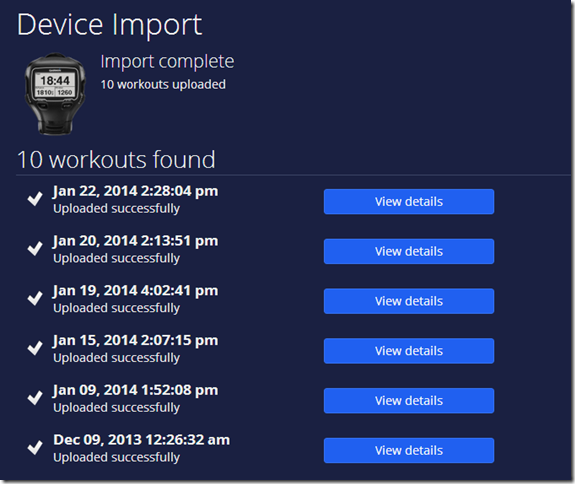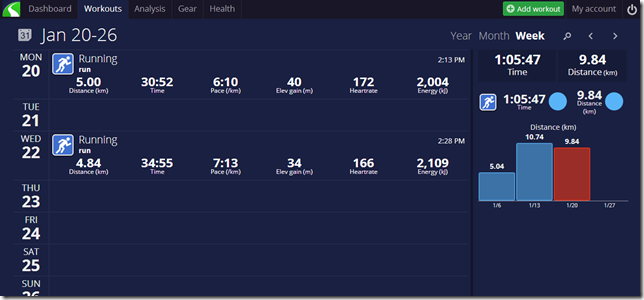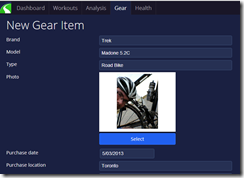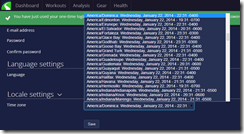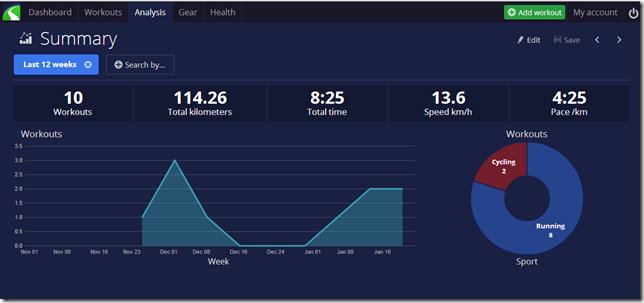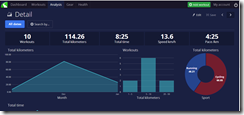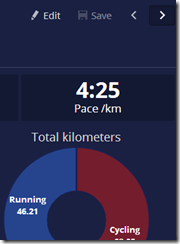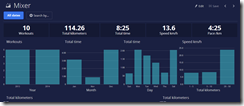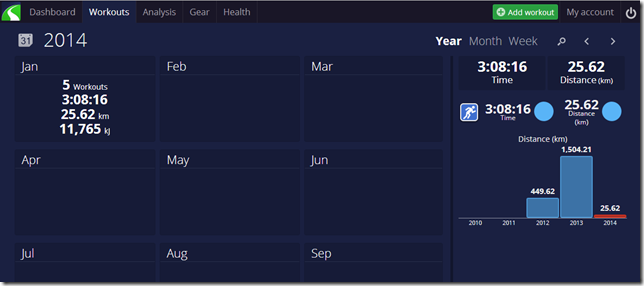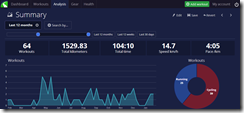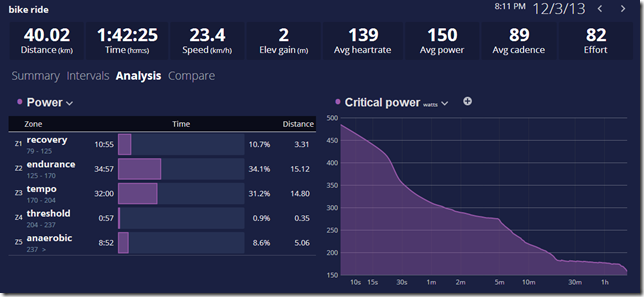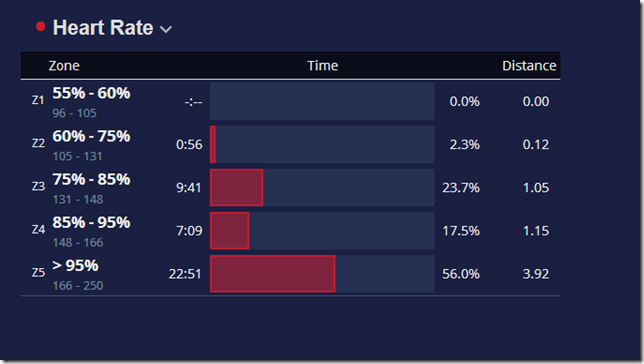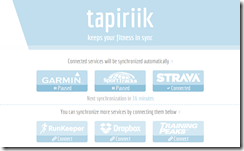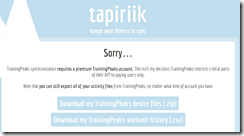So first I want to admit that the beta has actually done a very good job addressing the upload issue. Seen below is the Google-esque drag and drop into browser to upload feature. Seriously pretty cool. I uploaded several of my workouts like this.
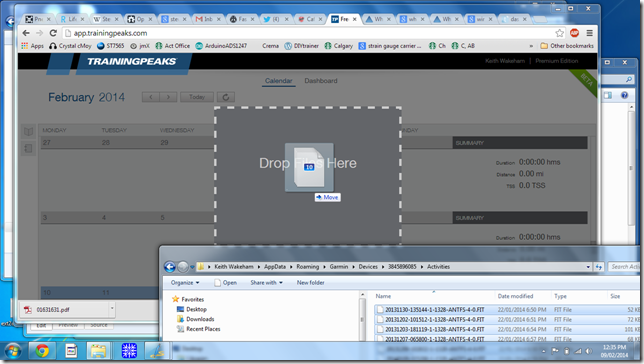
However, Training Peaks did reward my frustration with their older site with and upgrade to Pro for a week – which means tapiriik sync functions (at least until the trial expires / when I pay for a month it expires). I’m quite happy about this, and as Ray over at DCrainmaker commented, I shouldn’t get too upset about lack of API’s. Garmin doesn’t officially have one and has been throttling tapiriik.

The Beta, having addressed my upload issue, is going to be the focus. I firmly believe that a company isn’t going to stop developing a web app, so honestly they are really perpetual beta. I think for Training Peaks has alegacy group to support though. I’ve seen this in Mechanical Engineering software Catia. They have a version+revision system (such as V5R18 which stands for version 5 and revision 18), however while releasing new revisions of V5, they are concurrently building V6R7. It has to do with projects that are too big for a company to switch at one time and allows them to make great changes without alienating their customer bases.
The first thing you might want to do (Unless you live in the US) is that you’ll likely want to click on your name and go into the settings menu and fix the default from miles to kilometers and the date to DD/MM/YY. I have opinions on the Imperial versus Metric, but this map sums it up better than I can put into words.
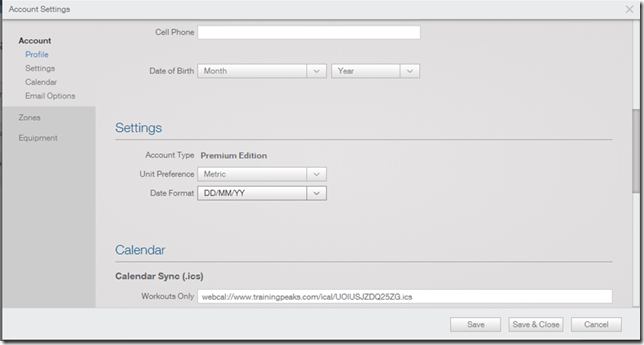
In the settings you’ll find something really cool but nerdy stuff. For instance there is a Workouts / Meals Calendar sync link. You can sync your Outlook or Apple Calendars to TrainingPeaks. This is a first from what I’ve seen and something that I desperately want to trial though haven’t had a chance to set it up.
Additionally this is where you’ll set your Heart Rate zones (via manual input, or many varieties of calculations based on a small amount of inputs). You’ll likely need to do a bit of research or examine your previous files going into adjusting these.
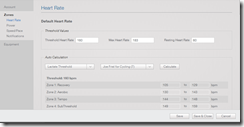
You can also go into the equipment tab, but honestly I’ve never seen much point to equipment tracking. I like that it has it, but I just don’t see it as beneficial. I mean some people will love to track shoes distance for replacement purposes, but for cycling I find a keen eye on your bike and checking it is going to be more effective than trying to manage it via a software solution. I’m likely unique in that I do all my own bike building and maintenance and I would suspect that the vast number of cyclists do not. It certainly has other use cases, such as differentiating mountain from road bikes.
So now that the basics of setup are out of the way it’s into the Calendar view I go. It’s a clean interface – I like it a lot better than the previous one (which I’ll stop mentioning now). It seems to automatically default to today on the top row, which means you have to manually scroll up to see last weeks work outs. At first I didn’t like this, but it makes a lot of sense from the perspective of seeing your upcoming plan – the dashboard is where you’ll look at old data in a big picture kind of way so this makes sense.
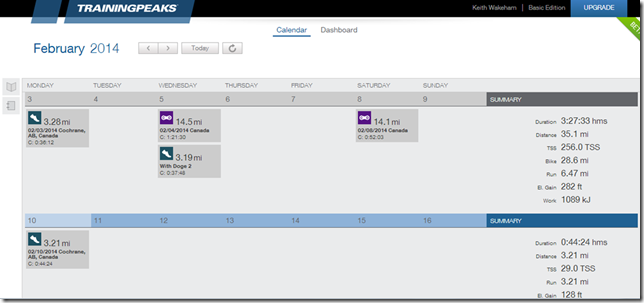
Over to the dashboard we see something similar to SportTracks.mobi with the pie charts.
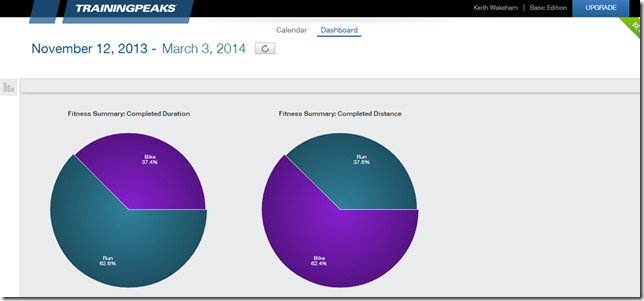
Click on the little tab on the top left hand corner and you get a list of some really well thought out graphs, yet I’m not overwhelmed by the number. You simply drag and drop them where you want them. It provides me with very useful graphs within seconds. It’s clean and smooth (even on my older underpowered laptop which is super nice).
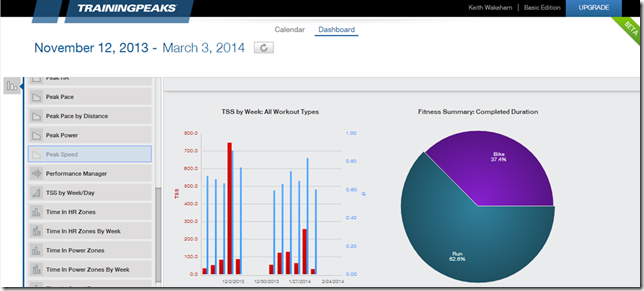
The only major complaint I have is that it feels very much built for a higher resolution display. If you’re running a 1366x768 (the most popular resolution by a 3:1 margin for Jan ‘14) then consider an upgrading your laptop(to maybe a Lenovo Yoga 2 Pro maybe if you want 3200x1800) as you’re not going to see anything more than two graphs at a time. Forcing my browser to zoom helps with the graphs but becomes a real problem for the text. It would be nice if there was some scalability of the sizes. This may be a short lived issue as almost every screen is going to be higher resolution soon in the mainstream over the next two years. However, then it’s the flip side, how well will it cope with a 11.6” quad FHD screen? So I would like to know how it deals in the opposite direction – the ultra high resolution screens. I suspect this is eventually going to be handed to the OS’s in the future, at least I hope.
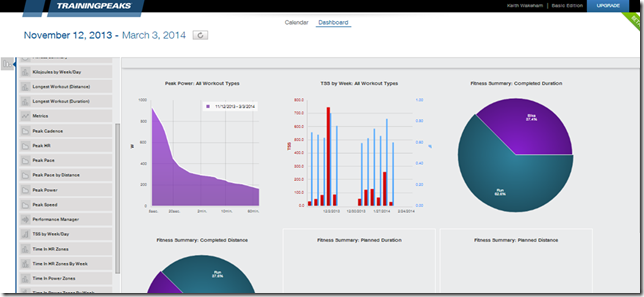
I don’t know if it’s maybe just my personal preference but I honestly really like the colour scheme. Another thing to note is that using Training Peaks logged in on two systems and making changes to the Dashboard on one system means a refresh will get the new stuff to show up on the other. I don’t know if that was planned, but it works.
One of the things they have done well (which is a port from WKO+) is the summaries. I really love this summary type. It breaks down my last few weeks, then breaks down the last few months below it. It’s a mental thing I find; you aren’t going to remember that run six weeks ago, but you’re going to be fairly fresh about your most recent workouts. However you’ll want to see how you’re progressing on a month by month basis. Since I have a major cycling focus the 5s, 1m, 5m, etc powers are important. It gives you at the second glance.

Something I find even more important than that is the Performance Manager. This is the graph that will give you your TSS, intensity factors, TSB, etc. It’s a great view which I wish more sites would replicate.
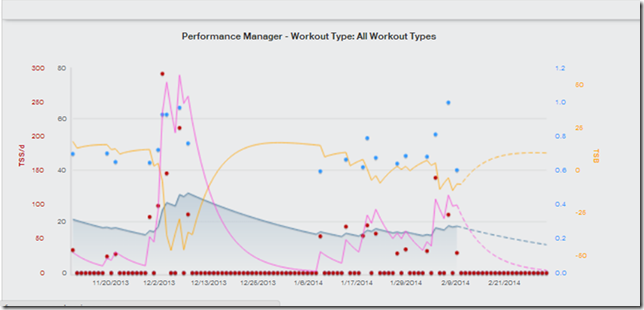
The level of customization goes deep with CTL and ATL constants. This is something I never got into before, but it makes sense to be adjustable because two people could have very different recovery times. Some people may recover faster than others and some slower. This is something that I’m inclined to leave alone mainly because I suspect changing it requires a combination of coaching and training experience with very good feedback or potentially long term testing. I’ll go out on a limb and guess that Training Peaks have selected the median values and you generally won’t need to touch them.
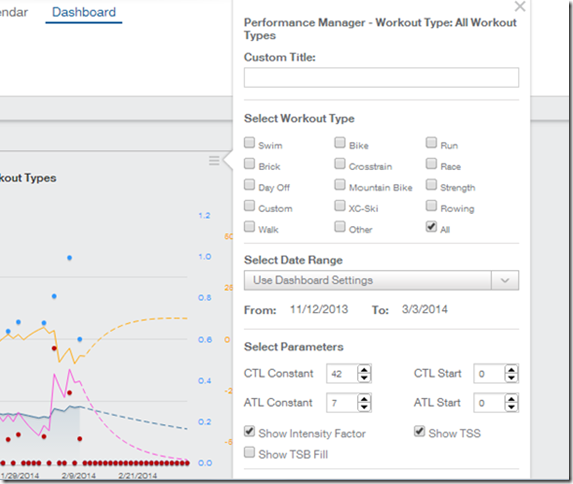
I’ve done some basic exploring. Mainly looking at my workouts. At first I wasn’t keen on the pop up windows but the more I used them the more efficient I felt they were. They gave me everything at a glace and I didn’t have to constantly navigate pages. It’s different, and if you walk into it with an open mind you’ll appreciate the workflow.
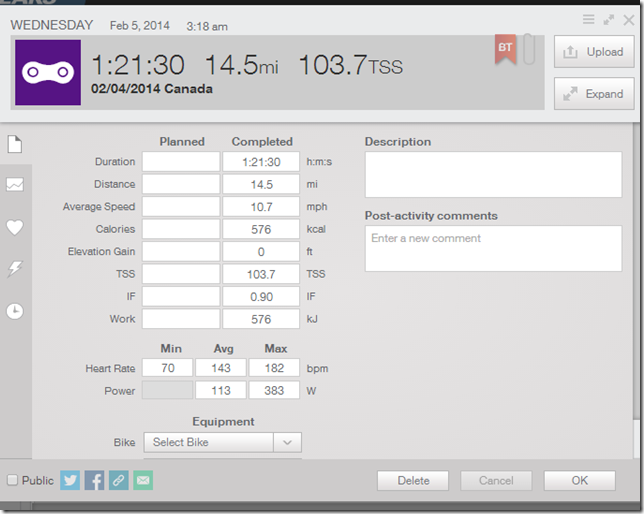
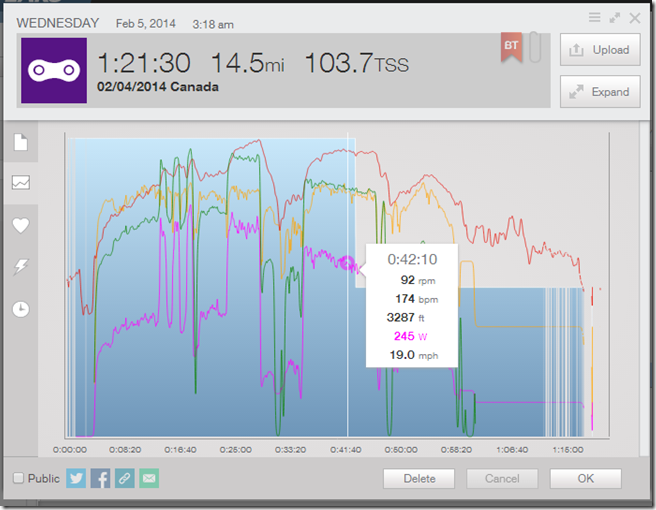
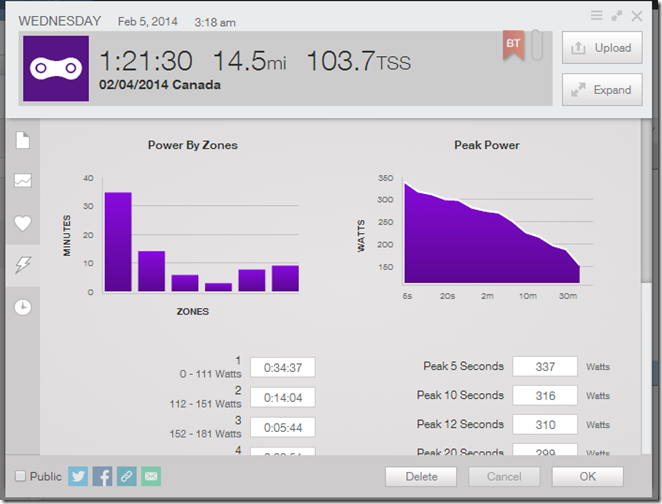
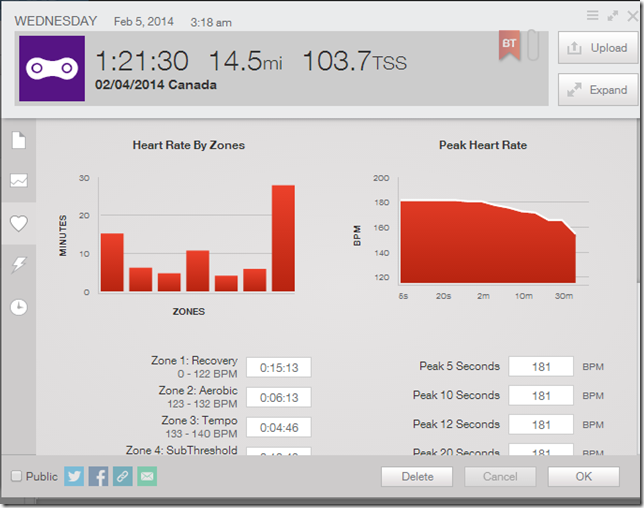
Some of you might have seen me post about my old trainer software (which was before TrainerRoad, and now, not nearly as good – seen here). I designed it to save files in a Powertap replicated format. However it left the ID field blank, but manually rectifying this (place 0’s in the field) meant that Training Peaks Beta could read them – dragging and dropping them put the file on today’s date. I’d like it to have popped up asking for these time and date missing files should go – but I’m generally just impressed that it worked at all.
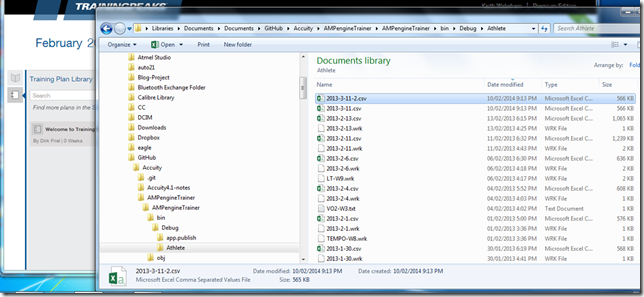
Since the CSV file has no true time stamp information (I save them automatically by date, but that doesn’t count as real meta data) there is a nice way to edit them. Opening the workout and clicking on the date produces the very familiar month menu’s. These are generally quick and easy to work with, unless you’re trying to upload a workout many months ago, but at that point it’s impact to CTL is so negligible that it’s mainly only for historic significance. If you really want to explore that old CSV power file from 3 years ago you can. It’ll just be a bit of a pain to get the right date but it certainly lets you.

All in all, the beta is what I should have looked at first.
I’m exploring implementing my workout plan and I’m bumping into a couple of limitations of the beta. It seems that plans can be added from the store in the Beta, but not manually. However a plan is just a series of workouts. So I went to the workout library and found my first limitation of the beta. Adding a workout has not yet been implemented. So with great hesitation I figured I’d switch to classic temporarily to see if it’ll show up.

However, I’m stopping there as I don’t want to review the “Classic” interface. I plan to put my plan into it and since Joe Friel is closely tied to Training Peaks as well it has an automated interface to put in a plan.
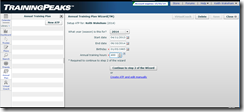
Cost
Training Peaks is the most expensive online tracking platform I’ve found at $20/month USD. I like subscription models for two reasons
- Cost of access is reduced
- Ensures Developers keep working on new features to be competitive
Being the first paid piece of software that I’m looking at, it’s hard to say if it’s analysis features make it worth the money. I’m still researching TRIMP as a tracking method compared to TSS so I can more accurately compare feature sets between different Web apps.
Bottom line (so far)
If you’re new to Training Peaks don’t bother with the Classic interface for tracking your work outs and analyzing data – however, unless you buy a plan you’ll be forced back to Classic to input yours. Hopefully this will be fixed soon.
Pro’s
- The drag and drop to upload feature, very good functionality
- Dashboard – simple,effective, and customizable – great historic graphs and listings
- Can do a rTSS calculation for running, making your runs automatically useful for tracking training stress scores / balance
- Interface and navigability in the Beta is much better than the Classic interface
Con’s
- API for Tapiriik syncing only available in paid version
- The drag and drop to upload feature is not intuitively know – I had to be told about it
- Not everything from the older “Classic” interface hasn’t been ported



















